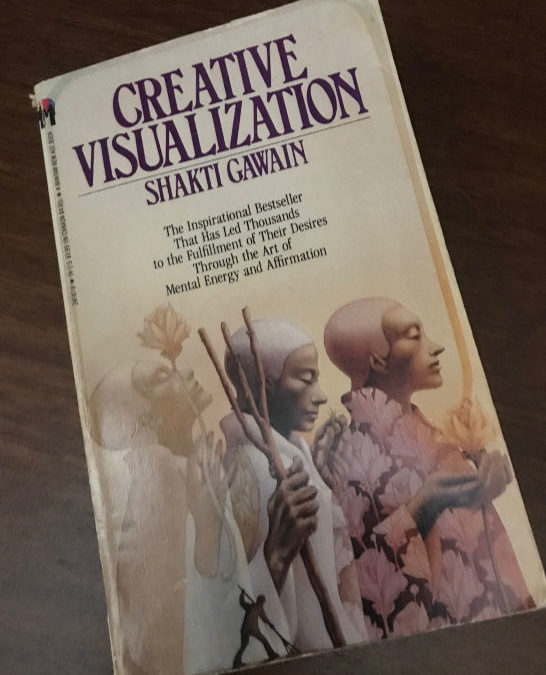
The Power of Visualization in Birthing
30
June 2019
My first introduction to visualization was via a “Treasure Map” activity in college. My roommate, new to Chico State from Cal Berkeley, insisted I join her for her annual birthday ritual – creating a treasure map of what she wanted for the next year of her life.
Admittedly, I was a little skeptical. After all, with her being a Berkeley transplant, I had a few preconceived ideas about her. I grew up across the bay from Berkeley. It boasted a reputation as a wild and liberal place throughout the 60’s, and 70’s. My parents warned me about the free-flowing spirits who wandered the Cal Campus.
My roomie swore her treasure maps were more than just simple picture wishes. She proudly whipped out her previous year’s map and it was covered with red hearts. The red hearts represented desires that came true.
Seeing all those hearts sold me. She shared the idea arose from a book, “Creative Visualization Use The Power of Your Imagination To Create What You Want In Life”. When a book sells six million copies, the author might just be on to something. So, I purchased a copy and soon joined the ranks of avid visualizers. Simply put, visualization is putting forth a mental rehearsal of what you want to draw into your life.
Law of Attraction is Nothing New
We’ve intuitively known for a long time that visioning what we desire is an effective way to bring about what we would like in our life. New Thought philosophy (1800’s), based on the writings of Phineas Quimby, a spiritual teacher and an early mesmerist (follower of Franz Mesmer) introduces is to the Law of the Mind. The most popular law, The Law of Attraction, suggests that our thoughts are forming our entire life experience. Our thoughts are things. Like attracts like. When we are visualizing, we are sending a powerful attraction frequency to the Universe.
Neuroscience and Our Birthing Brain
With advances in Neuroscience we now know the brain is always growing. In fact, we change our brains-and therefore our attitudes, beliefs and behaviors – just by thinking differently. For instance, when we repeatedly imagine (mentally rehearse) an image, like our desired birth, circuits in the brain organize themselves to reflect our desires. When we use sensory-rich language and detailed images we can make our thoughts so real that the brain will change to look like the event has already become a physical reality.
In his book, Evolve Your Brain: The Science of Changing Your Mind, Dr. Joe Dispenza, shares a study in which research subjects rehearsed simple one-handed piano exercises for two hours a day for five days. Researchers divided volunteers into three groups. In one group the subjects were asked to sit at the piano and play a simple set of scales and chords each day. In a second group, volunteers never actually touched any piano keys. They were asked to imagine doing the exercises. The third group did nothing. Participants’ brains were scanned each day in the region connected to the finger muscles. The changes in the brain in those who imagined playing the piano were the same as in those who actually played the piano.
Mentally Rehearse Your Desired Birth
What does all this mean when it comes to birthing? The subconscious mind is a captive audience when it comes to playing the movies in our head. That which you imagine happening is actually happening as far as your brain is concerned. Our thoughts become our experience. If your mental rehearsal has you easily, effectively, blissfully, birthing and this is the image you feed your mind over and over again, neuroscience studies suggest it will become your reality.
In another study conducted researchers at The Cleveland Clinic Foundation in Ohio volunteers who went to the gym were compared with volunteers who carried out “virtual workouts” in their heads. Researchers found that a 30% muscle increase in the group who went to the gym. However, the group of participants who conducted mental exercises of the weight training increased muscle strength by almost half as much (13.5%). This average remained for 3 months following the mental training.
Today, mental rehearsal is widely used by Olympic athletes, among others, in sports training. Sports psychologists travel with Olympic teams to assist them in their mental game. High on the list for training is visualization. One might argue that birthing can be Olympic in nature, so training for it is just as important.
Using the tools of mental rehearsal can significantly prepare you for an event in which you have never participated. By repeatedly rehearsing your desired bliss-filled birth, your brain will assume “that’s the way we birth” and execute the mind commands to the body to assist you in attaining your goal.
Recent Comments